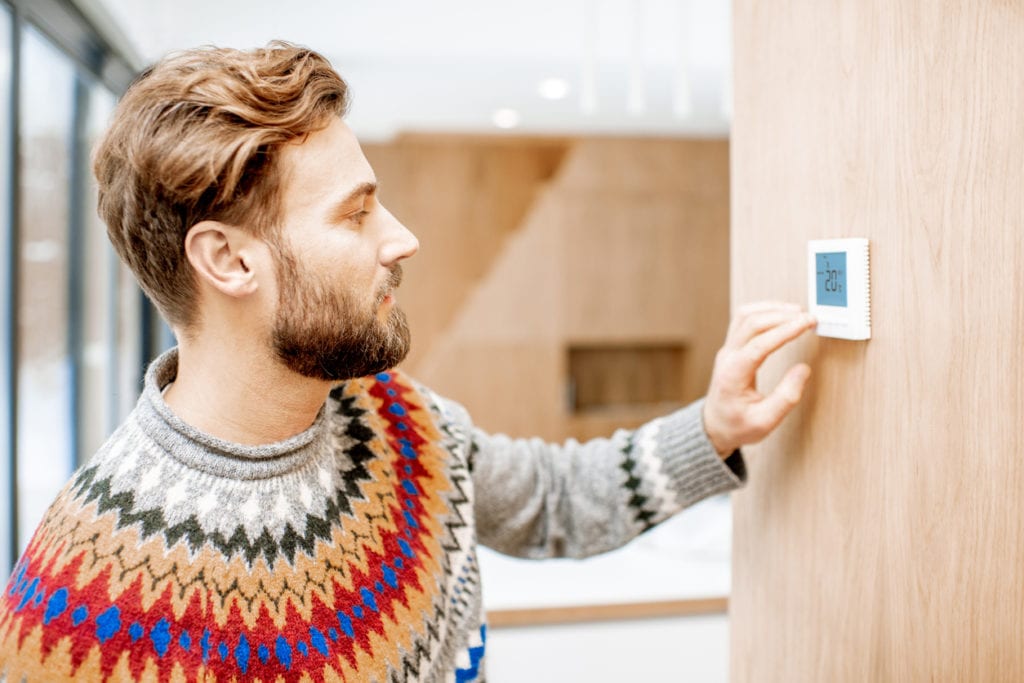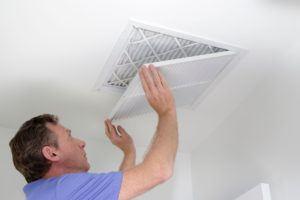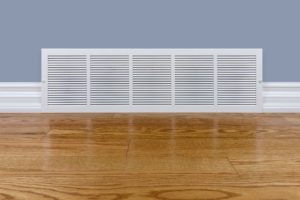When the temperature drops, we turn up the heat to stay comfortable. Most people prefer their homes somewhere between 65 and 75 degrees F depending on your personal body temperature and the temperatures you’re accustomed to. However, wintertime is also often associated with higher power bills because you want that heat going constantly to ward off the outdoor chill.
When the weather drops below freezing, your heater is working overtime to keep the house comfortable and safe for your family. This leaves many of us with the common question of where to set your thermostat in the winter.
Is there a best — or recommended — thermostat temperature? What is the perfect balance between comfort and saving on the power bill?
You can find that happy medium between warmth and cost. All you need is to understand your current winter climate. And remember to adjust your thermostat at key times during the day.
65 Degrees is (Nearly) the Perfect Temp
When setting your heater in the winter, avoid setting it too high above 70. Keeping the house balmy can cost a fortune in power bills. Instead, turn down that thermostat to somewhere between 60 degrees and 70 degrees F. For most people, 60 is a chilly sweater-friendly temperature, while going over 70 can get a little toasty.
The most efficient setting for your thermostat is around 65 degrees in the winter when temperatures outside have dropped to 50 or below. In fact, the closer your thermostat is to the outside temperature (while still in this comfort range), the less your heating costs will be.
Health Considerations for Household Members
Of course, this rule of thumb should be adapted for temperature-sensitive household members. If you have an infant or an ill family member who needs the house a little warmer, adjust as much as five degrees upward. This is to ensure they are safe when inside the house. However, if your temperature-sensitive family member has a private heater in a closed room or has left the house for somewhere else that is warm, then crank that thermostat back down to the coolest comfortable temp for the rest of the family. This way, you keep your family safe and minimize the resulting cost of heating.
Match Your Thermostat to the Climate When Possible
When you can, try to match the weather. When the weather is the coldest, let yourself adapt a little to the chill and set your temperature closer to 60 than 70. This is just the same as setting your air conditioner to 75 when temperatures skyrocket in the middle of summer. By matching the weather within your comfort zone, you can reduce the cost of heating (and cooling) based on the season.
Know When to Cool It Down
Some times of the day, you don’t need optimal heating in the house. If everyone leaves for work and school, set that thermostat down closer to the actual temperature outside. Your minimum before the pipes freeze is about 42. But you’re using very little power to heat a home even in the dead of winter when set down to the low 50s during times of inactivity. A programmable thermostat can turn your predictable schedule into energy savings.
When you go to bed is another good time to turn down the thermostat. And let the temperature get a little cooler. After all, winter is for snuggling into bed under your fluffiest blankets. In fact, sleeping under warm covers in a cold room is one of the best ways to achieve deep and restful sleep. Let the house cool down at night and the whole family will sleep better, provided you have the right blankets.
Embrace Wearing Sweaters at Home
Adapt to the weather. Some families like to keep the house at the exact same temperature all year long. And see a power bill to match. But if you practice adapting to the seasonal weather, you can save a real bundle by never setting the thermostat too far from the real temperature outside.
During the winter, embrace the sweater trend. Show your best thick sweaters and wooly socks indoors instead of stripping down to a T-shirt once you get home. This will make it much easier to set your thermostat closer to 60 than 70 and still be comfortable. You might even find yourself comfortable down at 55 with the right warm-yet-comfortable winter clothes.
The Best Thermostat Temperature in the Winter
The best temperature for your home thermostat will depend on the weather and your family’s temperature needs. Try to get as close to the outside temp as you can while still remaining comfortable in a sweater and remember to turn down the heat when you leave or sleep. With these methods, you’ll see your winter power bills drop and enjoy your home heating with satisfaction.
Home heater running inefficiently even with your careful thermostat work? We can help. Contact us today for more home heating insights. Or to schedule a maintenance repair to improve the performance of your heater this winter. Our heating and cooling company proudly serves those in Yankton, Vermillion, and the surrounding SD communities.





